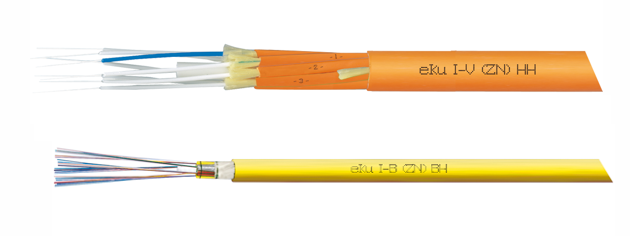indoor fibers
Because of their properties,FO indoor cables are only suitable for indoor installation. These cables can be used both in building cabling and in floor cabling. Important for indoor cables is the fire behavior, fire propagation and freedom from halogens.
LwL indoor cables are constructed as quasi-full cores with aramid yarn and a fleece wrap as a separating agent between the aramid yarn and the sheath. The sheath is made of flame retardant, halogen-free material, Flame Retardant Non Corrosive( FRNC), such as polyurethane( PUR).
The LwL inner cable is characterized by flexibility, the tensile strength is provided with 400 N as standard, by using the quasi solid core, the transverse compressive strength and hammer impact strength of conventional cables with solid core construction is far exceeded. The use of polyurethane as the cable sheath material results in very good abrasion resistance. Added to this is the well-known resistance to various chemicals. Since polyurethane has much better low-temperature behavior than polyvinyl chloride( PVC), the cable also remains flexible at -20 degrees C and the attenuation remains stable.
Indoor cables can be certified by DIN/VDE according to 0888. According to DIN/VDE, a gray PVC jacket is mandatory for this cable. The outer diameter is specified as 3.5 mm. For FO indoor cables of OM classes, the cable sheath is color-coded. OM class 1 and 2 cables have an orange cable sheath, OS class monomode fibers have a yellow cable sheath.

